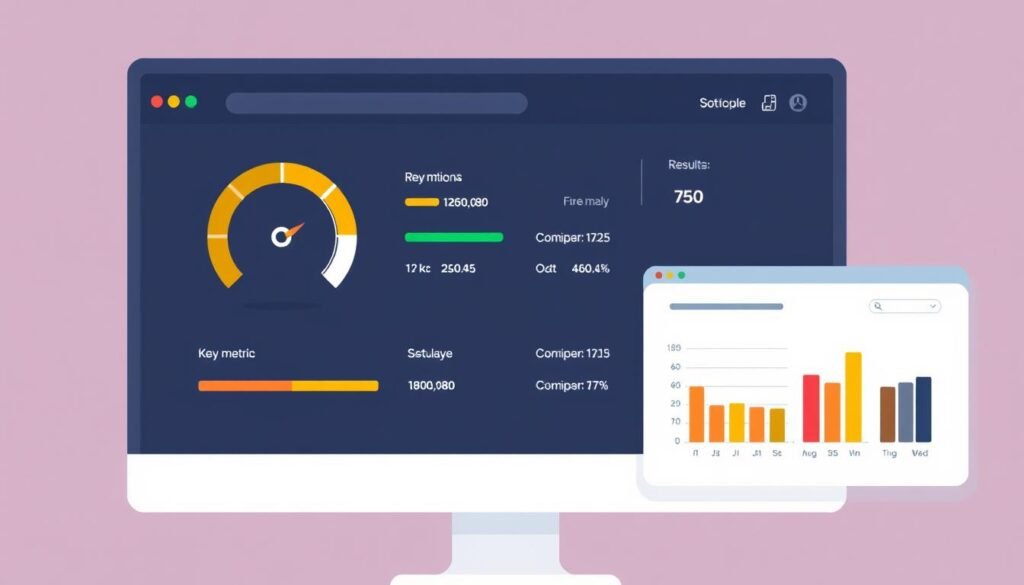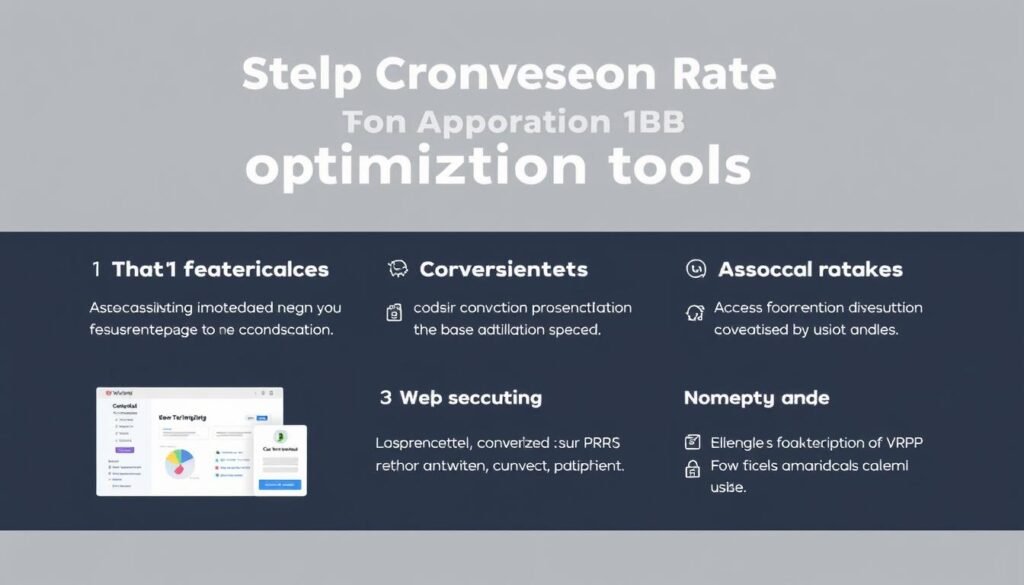In today’s competitive digital landscape, a staggering 75% of users judge a company’s credibility based on its website. This statistic underscores the importance of having a well-optimized online presence. A well-optimized website is no longer a luxury, but a necessity for business success and growth.
To improve your online presence, you need to focus on website optimization, a multifaceted process that involves enhancing various aspects of your site, including speed, usability, conversion rates, and SEO. By doing so, you can increase traffic, boost engagement, and drive conversions. Effective website optimization requires a comprehensive approach, involving continuous monitoring, testing, and refinement, as well as the right web hosting to support your site’s performance.
Key Takeaways
- Understand the importance of website optimization for business success
- Learn the core focus areas for a holistic optimization strategy
- Discover techniques to improve your website’s search engine ranking
- Improve your website’s user experience and conversion rates
- Implement actionable strategies to drive measurable results
Understanding Website Optimization
To enhance your online presence, understanding the intricacies of website optimization is crucial. This process involves a holistic approach, combining various disciplines to ensure your website performs ideally in all key areas.
A holistic website optimization approach encompasses several critical components, including SEO, Copywriting, Analytics, UX Design (Frontend), Web Development (Backend), and CRO/Landing Page Optimization. By integrating these elements, you can significantly improve your website’s overall performance and effectiveness.
What is Marketing Digital Website Optimization?
Marketing digital website optimization refers to the comprehensive process of enhancing your website’s visibility, usability, and overall performance. This involves optimizing various aspects of your site to improve its ranking on search engines, drive more traffic, and increase conversions.
The goal is to create a seamless user experience that not only attracts visitors but also encourages them to take desired actions on your site. By focusing on content quality, SEO strategies, and technical improvements, you can achieve a more effective online presence.
The Five Core Focus Areas of Website Optimization
Website optimization can be broken down into five core focus areas, each addressing a different aspect of your website’s performance and effectiveness. These areas work together synergistically to create a compounding effect on your website’s overall performance.
- On-page SEO and content optimization focuses on creating valuable, relevant content that satisfies both user needs and search engine requirements.
- Technical SEO addresses behind-the-scenes elements that impact how search engines crawl, index, and render your website.
- User experience (UX) optimization ensures your website is intuitive, accessible, and visually appealing.
- Website performance optimization concentrates on speed and efficiency, ensuring fast load times across all devices and connection types.
- Conversion rate optimization (CRO) focuses on increasing the percentage of visitors who take desired actions on your site.
For more information on how to enhance your website’s security, a critical aspect of website optimization, you can refer to resources like choosing a web hosting provider with good security.
Why Website Optimization Matters for Your Business

Optimizing your website is not just about aesthetics; it’s about driving real business results. A well-optimized website is the cornerstone of a successful online presence, directly influencing your ability to attract, engage, and retain customers.
Improving User Experience and Engagement is a critical aspect of website optimization. By analyzing user behavior and preferences, you can tailor your website to meet their needs more effectively. This involves streamlining navigation, enhancing content relevance, and ensuring that your site is accessible across various devices. When users find your website intuitive and engaging, they are more likely to stay longer, explore more pages, and ultimately take the desired actions.
Improving User Experience and Engagement
A positive user experience is fundamental to keeping visitors engaged. Your website should be easy to navigate, with clear and concise content that resonates with your target audience. By optimizing your website’s design and functionality, you can reduce bounce rates and increase the time users spend on your site.
Engagement is not just about aesthetics; it’s about creating a seamless journey for your users. This can be achieved by ensuring that your website loads quickly, is mobile-friendly, and has a clear call-to-action (CTA) that guides users toward their desired goals.
Boosting Search Engine Rankings
Website optimization also plays a crucial role in Boosting Search Engine Rankings. Search engines like Google favor websites that are optimized for user experience, relevance, and technical performance. By optimizing your website’s structure, content, and meta tags, you can improve your visibility in search engine results pages (SERPs).
A higher ranking in search engines means more visibility, which can lead to increased traffic and, ultimately, more conversions. It’s a cycle where optimization improves rankings, and better rankings drive more traffic.
Increasing Conversion Rates and Revenue
The ultimate goal of website optimization is to Increase Conversion Rates and Revenue. By fine-tuning your website based on user behavior and data-driven insights, you can guide visitors more effectively toward taking the desired actions. This could be making a purchase, filling out a form, or subscribing to a newsletter.
Conversion rate optimization (CRO) is a systematic process that involves identifying barriers to conversion, testing different elements of your website, and making data-driven decisions to enhance user experience and encourage conversions. Even small improvements in conversion rates can have a significant impact on your revenue.
- Data-driven optimization ensures that changes are based on actual user behavior.
- Systematic testing helps identify the most effective versions of web pages or elements.
- Optimizing for conversions maximizes the return on investment from your marketing efforts.
On-Page SEO and Content Optimization Strategies

A well-optimized website is fundamental to achieving higher search engine rankings and increasing online visibility. On-page SEO involves optimizing individual web pages to rank higher and earn more relevant traffic. This process includes several key strategies that help search engines understand the content and relevance of your website.
Keyword Research and Implementation
Keyword research is the foundation of any successful SEO strategy. It involves identifying the terms and phrases your target audience uses to search for content like yours. Effective keyword research helps you understand your audience’s needs and preferences, allowing you to create content that resonates with them.
To implement keywords effectively, you should incorporate them naturally into your content, including headings, subheadings, and body text. However, avoid keyword stuffing, as it can lead to penalties from search engines. Instead, focus on creating high-quality, engaging content that addresses the needs of your audience.
Creating Compelling and Optimized Content
Creating compelling and optimized content is crucial for capturing the attention of both search engines and your target audience. Your content should be informative, engaging, and provide value to the reader. Use a mix of content types, such as blog posts, videos, and infographics, to cater to different preferences.
When creating content, remember to optimize it with relevant keywords, meta descriptions, and title tags. This will not only improve your search engine rankings but also increase click-through rates from search results pages.
Optimizing Title Tags, Meta Descriptions, and URLs
Title tags, meta descriptions, and URLs are critical on-page SEO elements that influence both search engine rankings and click-through rates. Your title tag serves as the headline in search results and should include your primary keyword near the beginning while remaining compelling and under 60 characters.
Meta descriptions don’t directly impact rankings but significantly affect click-through rates—craft them as compelling 150-160 character advertisements that include a call to action and relevant keywords. Create clean, descriptive URLs that include your target keyword and clearly indicate the page’s content.
Each page on your site should have unique title tags and meta descriptions that accurately reflect that specific page’s content and purpose. Consider including your brand name in title tags, typically at the end, to build recognition and trust with searchers.
Technical SEO: The Foundation of Marketing Digital Website Optimization

Technical SEO is the backbone of a successful digital marketing strategy, enabling search engines to crawl, index, and rank your website effectively. A well-implemented technical SEO strategy ensures that your website is visible, accessible, and user-friendly, laying the groundwork for improved search engine rankings and increased online visibility.
Site Structure and Navigation Optimization
A well-organized site structure and intuitive navigation are crucial for both users and search engines. A clear site structure helps search engines understand your website’s hierarchy and content, making it easier to crawl and index your pages. You can achieve this by implementing a logical URL structure, using descriptive and concise URLs, and creating a comprehensive sitemap.
Moreover, a user-friendly navigation system enables visitors to find the information they need quickly and easily, reducing bounce rates and improving engagement. To optimize your site’s navigation, consider using clear and concise labels, limiting the number of menu items, and providing a search function.
Mobile Responsiveness and Core Web Vitals
With the majority of online users accessing websites through mobile devices, ensuring that your website is mobile-responsive is no longer a nicety, but a necessity. A mobile-responsive design adapts to different screen sizes and devices, providing a seamless user experience across various platforms.
In addition to mobile responsiveness, Google’s Core Web Vitals have become a key ranking factor. These metrics assess your website’s performance, interactivity, and visual stability, providing insights into areas that need improvement. To optimize your website’s Core Web Vitals, focus on improving page load times, reducing layout shifts, and enhancing overall user experience.
Fixing Crawlability and Indexation Issues
Crawlability and indexation are critical components of technical SEO, as they determine how search engines discover, crawl, and index your website’s content. Common crawlability issues include broken links, crawl errors, and blocked resources, which can be identified and resolved using tools like Google Search Console.
To improve indexation, ensure that your website’s content is high-quality, relevant, and regularly updated. You can also use meta tags, such as the robots meta tag, to communicate with search engines and control how your content is indexed.
Managing Duplicate Content
Duplicate content occurs when identical or substantially similar content appears on multiple URLs, confusing search engines about which version to index and rank. While not a penalty-triggering issue, duplicate content can dilute your ranking potential by splitting link equity and causing search engines to waste crawl budget.
To manage duplicate content, implement canonical tags to explicitly tell search engines which version of similar pages should be considered the primary one for indexing and ranking. You can also use 301 redirects to consolidate duplicate pages and configure your website to serve content from a single preferred domain.
Website Performance Optimization Techniques

With the majority of users expecting websites to load within seconds, optimizing website performance has become a top priority. A fast and responsive website not only improves user experience but also plays a significant role in search engine optimization (SEO). In this section, we’ll explore key techniques to enhance your website’s performance.
Improving Page Load Speed
Page load speed is a critical factor in determining user engagement and conversion rates. Optimizing images, leveraging browser caching, and minifying CSS and JavaScript files are some of the effective ways to improve page load speed. Tools like Google PageSpeed Insights can help identify areas that need improvement.
By implementing these strategies, you can significantly reduce your website’s loading time, thereby enhancing the overall user experience. Faster websites are more likely to retain visitors and encourage them to explore further.
Image and Media Optimization
Images and media content are among the primary contributors to a website’s page load time. Compressing images without compromising their quality is a crucial step in optimizing media. Tools like TinyPNG and ImageOptim can help reduce image file sizes. Additionally, using modern image formats like WebP can further reduce file sizes.
Optimizing media files not only improves page load times but also enhances the overall performance of your website. By reducing the file size of your images and media, you can ensure a smoother user experience.
Implementing Content Delivery Networks (CDNs)
A Content Delivery Network (CDN) is a network of distributed servers that deliver web content to users based on their geographic location. Using a CDN can significantly reduce latency and improve page load times by reducing the distance between the user and the server. Popular CDN providers include Cloudflare and Amazon CloudFront.
CDNs work by caching your website’s static assets across different servers worldwide. When a user visits your site, the CDN delivers the content from the nearest server, reducing the data travel time. This not only improves load speeds but also reduces the load on your origin server.
- Content Delivery Networks (CDNs) dramatically improve website performance by distributing your site’s static assets across a global network of servers, reducing latency for users worldwide.
- When a user visits your site, the CDN delivers content from the server geographically closest to them, cutting down on data travel time and significantly improving load speeds.
- Beyond speed improvements, CDNs provide additional benefits including reduced server load, protection against traffic spikes, enhanced security against DDoS attacks, and improved availability.
- Implementing a CDN is relatively straightforward—popular options like Cloudflare, Amazon CloudFront, and Fastly offer simple setup processes that require minimal technical knowledge.
- For maximum benefit, configure your CDN to cache static assets like images, CSS files, JavaScript files, and downloadable content, while keeping dynamic content on your origin server.
- Set appropriate cache expiration times (TTL) for different types of content—longer for assets that rarely change (like logos) and shorter for more frequently updated content.
- Most CDNs offer additional performance features like automatic image optimization, minification of HTML/CSS/JavaScript, and HTTP/2 or HTTP/3 support that further enhance speed.
- Monitor your CDN’s performance through their analytics dashboard and tools like Google Analytics to ensure it’s delivering the expected improvements in page load times.
User Experience (UX) Optimization

A superior user experience is vital for driving business growth through your website. By focusing on UX optimization, you can create a website that not only attracts visitors but also engages them and encourages conversions.
Designing Intuitive Navigation Systems
An intuitive navigation system is crucial for helping users find the information they need quickly and easily. This involves organizing your content in a logical manner, using clear and concise labels for menu items, and ensuring that your navigation is consistent across all pages.
Key elements of intuitive navigation include a visible and accessible menu, a search function, and breadcrumb trails to help users understand their location within your site.
Creating Mobile-Friendly Experiences
With the majority of internet users accessing websites through mobile devices, creating a mobile-friendly experience is no longer optional. This involves using responsive design to ensure your website adapts to different screen sizes, optimizing images and content for faster loading times, and ensuring that all interactive elements are easily accessible on smaller screens.
Mobile-friendliness is not just about aesthetics; it’s also a factor in search engine rankings, as Google prioritizes mobile-friendly websites in its search results.
Optimizing for Accessibility
Optimizing for accessibility ensures your website is usable by people of all abilities, including those with visual, auditory, physical, speech, cognitive, and neurological disabilities. Following accessibility guidelines not only expands your potential audience but also often improves the experience for all users.
- Accessibility optimization ensures your website is usable by people of all abilities.
- Beyond being an ethical consideration, accessibility is increasingly a legal requirement.
- Start with proper semantic HTML structure and use appropriate heading levels.
- Ensure sufficient color contrast and don’t rely solely on color to convey information.
- Provide descriptive alt text for meaningful images.
- Make all functionality accessible via keyboard.
- Test your site with assistive technologies and conduct accessibility audits.
By implementing these strategies, you can significantly enhance your website’s user experience, making it more inclusive and user-friendly for a broader audience.
Conversion Rate Optimization Strategies

To maximize your website’s potential, implementing effective conversion rate optimization strategies is crucial. By analyzing user data and metrics, you can identify areas for improvement and track performance over time. This process involves leveraging both quantitative and qualitative analysis to gain valuable insights into user behavior, preferences, and trends.
Quantitative analytics tools like Google Analytics provide crucial data about website performance, including bounce rate and conversion rate. Meanwhile, behavioral analytics tools offer deeper insights into specific actions visitors take on your website. By combining these tools, you can develop a comprehensive understanding of your users’ interactions with your site.
Optimizing Call-to-Action Elements
Optimizing call-to-action (CTA) elements is a critical aspect of conversion rate optimization. Your CTAs should be prominent, clear, and compelling, guiding users toward desired actions. To achieve this, consider factors such as color, size, placement, and wording. For instance, using action-oriented language like “Sign Up Now” or “Get Started Today” can significantly improve CTA effectiveness.
A/B Testing for Higher Conversions
A/B testing, also known as split testing, involves comparing two versions of a webpage or element to determine which one performs better. By systematically testing different variations, you can gain insights into what resonates with your audience and make data-driven decisions to enhance conversion rates. Tools like VWO enable you to conduct A/B testing efficiently, helping you refine your website for better performance.
Reducing Friction Points in User Journey
Reducing friction points in the user journey is essential for improving conversion rates. Friction points are elements that cause users to hesitate or abandon their journey. Common friction points include complicated forms, slow loading times, and unclear navigation. By identifying and addressing these issues, you can create a smoother user experience, increasing the likelihood of conversion. For more information on how digital marketing impacts various industries, you can visit this article on the impact of digital marketing on the travel.
Leveraging Analytics for Conversion Insights
Analytics provide the foundation for effective conversion rate optimization by revealing how users interact with your website. By setting up proper goal tracking in Google Analytics or your preferred analytics platform, you can measure specific conversion actions. Additionally, using heatmaps, scroll maps, and session recordings can help visualize user behavior, allowing you to identify areas for improvement.
Segmenting your data to compare conversion rates across different traffic sources, devices, demographics, and user behaviors can help identify high-performing segments and optimization opportunities. By leveraging analytics and insights, you can continually refine your website to enhance performance and drive more conversions.
Measuring Website Optimization Success

Effective website optimization is not just about implementing changes, but also about measuring their impact on your online presence. To understand whether your efforts are yielding the desired results, you need to track and analyze key performance metrics.
Key Performance Indicators to Track
To measure the success of your website optimization, you need to identify and track relevant Key Performance Indicators (KPIs). These may include metrics such as website traffic, conversion rates, bounce rates, and average session duration. By monitoring these KPIs, you can gain insights into how your website is performing and identify areas for improvement.
For instance, if you notice a significant increase in website traffic but a corresponding rise in bounce rates, it may indicate that your content is not resonating with your audience. On the other hand, a decrease in bounce rates and an increase in conversion rates could signal that your optimization efforts are paying off.
Using Analytics Tools Effectively
To track and analyze your KPIs, you need to use website analytics tools effectively. Tools like Google Analytics provide a wealth of data on your website’s performance, allowing you to make informed decisions about your optimization strategy. When using analytics tools, it’s essential to set clear goals and configure your tracking settings correctly to ensure accurate data collection.
By leveraging analytics tools, you can gain a deeper understanding of your website’s strengths and weaknesses, enabling you to refine your optimization efforts and drive better results.
Creating Optimization Reports
Creating optimization reports involves compiling and presenting data in a way that clearly communicates the impact of your optimization efforts to stakeholders. Effective reports go beyond raw numbers to tell a story about website performance and provide actionable insights.
Some best practices for creating optimization reports include:
- Structuring reports around key business objectives rather than just metrics—show how website performance is affecting revenue, lead generation, or other business goals.
- Including both high-level summaries for executives and detailed breakdowns for team members who will implement recommendations.
- Visualizing data with charts and graphs to make trends and comparisons more immediately apparent and easier to understand.
- Providing context by comparing current performance against historical data, industry benchmarks, and pre-established goals or KPIs.
- Highlighting both successes and areas for improvement, with specific, prioritized recommendations for addressing underperforming areas.
Common Website Optimization Mistakes to Avoid

To ensure your website reaches its full potential, it’s essential to be aware of and avoid common optimization mistakes. Effective optimization is about creating a better experience for your users, which in turn can improve your search engine rankings.
Overlooking Mobile Optimization
One of the most significant mistakes you can make is overlooking mobile optimization. With the majority of users accessing websites through mobile devices, a non-mobile-friendly site can lead to high bounce rates and poor engagement. Ensure your website is responsive and provides a seamless experience across all devices.
Mobile optimization is not just about resizing elements; it’s about creating a user-friendly interface that caters to the needs of your mobile audience. This includes easy navigation, fast loading times, and content that is easily consumable on smaller screens.
Neglecting Page Speed
Page speed is a critical factor in both user experience and SEO. A slow-loading website can frustrate users and lead to higher bounce rates, negatively impacting your business. Optimize images, leverage browser caching, and minimize CSS and JavaScript files to improve your site’s speed.
Tools like Google PageSpeed Insights can provide valuable insights into your website’s performance and offer recommendations for improvement. By prioritizing page speed, you can enhance the overall experience for your users.
Focusing on Search Engines Over Users
Focusing too heavily on search engines rather than actual users is a fundamental mistake that undermines the purpose of website optimization—to create better experiences that drive business results. Prioritize creating content that genuinely answers user questions and solves their problems rather than just targeting keywords.
- Balance SEO best practices with usability considerations.
- Avoid intrusive interstitials and excessive ads.
- Use actual user feedback and behavior data to guide optimization decisions.
By avoiding these common mistakes, you can ensure your website is optimized effectively for both users and search engines, ultimately driving more conversions and improving your online presence.
Conclusion: Implementing a Holistic Website Optimization Strategy
A strategic approach to website optimization is vital for driving business growth and improving online visibility. This involves a continuous process of analyzing visitor behavior, identifying key problem areas, and improving crucial conversion paths to boost the overall user experience.
To achieve this, you need to adopt a holistic approach that addresses all core areas, including on-page SEO, technical SEO, user experience, website performance, and conversion rate optimization. Start with a comprehensive audit to establish baselines and identify critical issues. Prioritize efforts based on potential impact and resource requirements. For more insights on this process, visit VWO’s website optimization resources.
By committing to continuous, strategic website optimization, you’ll create a powerful digital asset that drives sustainable business growth through improved visibility, engagement, and conversions. This ongoing effort will help you stay on top of evolving audience behaviors and adapt to changing industry trends.
